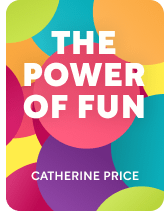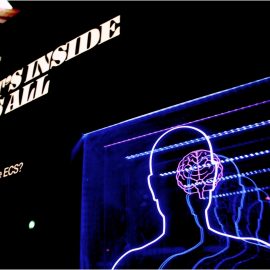

This article is an excerpt from the Shortform book guide to "The Power of Fun" by Catherine Price. Shortform has the world's best summaries and analyses of books you should be reading.
Like this article? Sign up for a free trial here.
When have you had the most fun? What joy-filled experiences would you like to recreate?
In The Power of Fun, Catherine Price explains why fun is fundamental to living a happy and healthy life and shares how everyone can start having more fun. The first step, she says, is to assess your current relationship to fun.
Keep reading to learn about Price’s fun audit and how it can put you on the path to having more fun in life.
Fun Audit
Before making any major changes to your life, Price suggests taking time to do a “fun audit”—a self-assessment of your current relationship to fun to better understand what True Fun means for you.
(Shortform note: Self-assessment is a powerful tool to use before making any kind of life change, whether it be a career shift or implementing a new habit. Self-assessment allows you to make sure the change is right for you, identify potential challenges, and develop a plan, all of which will ultimately increase your chances of success.)
Step 1: Identify What Fun Feels Like
Many of us are acutely aware of what stress and worry feel like. We spend less time thinking about what fun feels like. Ask yourself how you know you’re having fun. What does it feel like emotionally? Physically? True Fun is often associated with feelings of freedom, release, and excitement, but these feelings may vary in intensity and duration. Retraining yourself to focus on fun will allow you to notice experiences of True Fun, however small or brief.
(Shortform note: Identifying what fun feels like means being more mindful of your experiences. According to mindfulness expert Jon Kabat-Zinn, mindfulness is the practice of noticing the present moment and observing it without judgment. Practicing mindfulness will help you increase awareness of your thoughts, feelings, and bodily sensations, making you more likely to notice the things that you have fun doing, and more likely to remember the experience afterward.)
Step 2: Establish Your Baseline for Fun
Consider how often you have fun. What activities or people do you have fun with? When was the last time you had fun? Is there anything fun you’re looking forward to this week? Do you feel like you’re having enough fun? (Price argues that if you don’t identify fun as a priority and set aside time every week specifically for fun, you’re likely not having enough fun.)
(Shortform note: Baseline data is used in numerous fields, from education to public health to product management. Establishing a baseline is important because it provides you with a point of reference or comparison. Without establishing this baseline, you won’t know whether your attempts to integrate more fun into your life are successful.)
Step 3: Reflect on Past Experiences
Price defines True Fun as the intersection of playfulness, connection, and flow. She defines playfulness as a liberating attitude of curiosity, openness, and willingness to experiment. Playfulness is about doing something just for the sake of doing it, not because it is “productive” or has a higher purpose. Playfulness is less about any specific activity than the attitude you bring to what you’re doing.
Price defines connection as a sense of belonging and intimacy that arises from feeling understood and valued. Price explains that this connection can take many forms, from deep conversations with friends to spending time in nature or playing with a beloved pet.
The third component of True Fun is flow. Price defines flow as a state of complete absorption in an activity, where a person is fully immersed in the present moment and loses track of time. She explains that flow is characterized by effortless concentration and a feeling of being in control, despite the challenge of the activity.
Think about three experiences in which you experienced a combination of playfulness, connection, and flow. As you’re reflecting on your experiences, take time to notice any common themes in your experiences. For example, does fun tend to occur with the same people or in the same places? Does it include small groups or one-on-one experiences? These themes are valuable information as you start to consider how to introduce more fun into your life.
(Shortform note: Your memories of your past experiences may not be as accurate as you think. Daniel Pink, author of When, explains that endings disproportionately shape the memory of an experience. For example, an experience that’s overwhelmingly positive but ends badly is more likely to be remembered negatively than a mediocre experience that ends on a high note. Knowing this can help ensure that when you reflect back on your experiences of fun, you think about them holistically, without putting too much weight on the ending.)
Step 4: Document Fun When You Have It
Moving forward, start to keep track of things that you do that are examples of playfulness, connection, and/or flow, in addition to any activities you did “for fun.” You may start to notice a disconnect between what you think of as fun and unexpected moments of playfulness, connection, and flow in your day. Circle any activity that involves all three variables, as this is likely a recipe for True Fun.
(Shortform note: Price’s fun journal is based on the “Good Time Journal” outlined by Bill Burnett and Dave Evans in Designing Your Life. The Good Time Journal is meant to help you track what activities in your life motivate you (and demotivate you). Like Price, the authors recommend that for each activity, you pay particular attention to who you were with, where you were, and what you were doing. There are online journal templates and an app-based version of the Good Time Journal that could be used for Price’s recommended journaling activity.)

———End of Preview———
Like what you just read? Read the rest of the world's best book summary and analysis of Catherine Price's "The Power of Fun" at Shortform.
Here's what you'll find in our full The Power of Fun summary:
- Why fun is fundamental to living a happy and healthy life
- How modern society has made it harder to prioritize fun
- A step-by-step guide to invite more fun into your life






